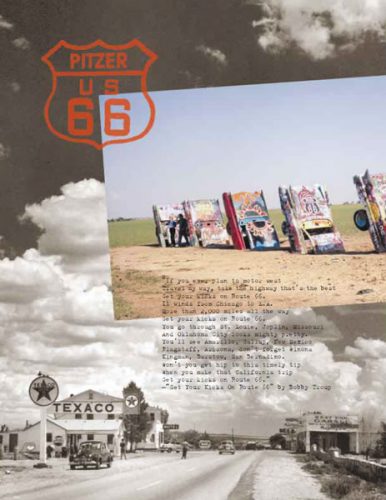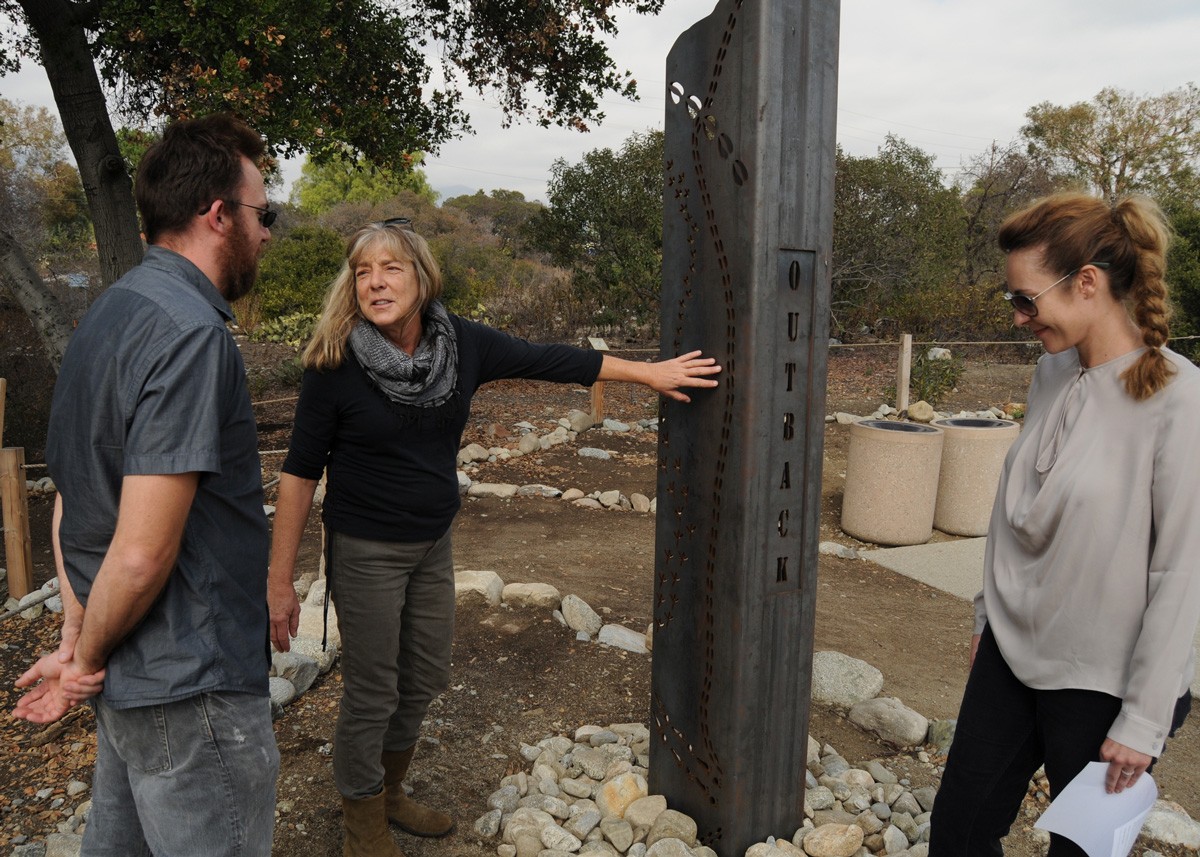 Art has been an important part of Pitzer’s unique, interdisciplinary approach to liberal arts education for almost fifty years. Over the years, faculty and students have explored art as an interdisciplinary laboratory in which to address important questions of environmental sustainability, intercultural understanding, as well as learning about art as means of intellectual inquiry and knowledge production, community engagement, and personal expression.
Art has been an important part of Pitzer’s unique, interdisciplinary approach to liberal arts education for almost fifty years. Over the years, faculty and students have explored art as an interdisciplinary laboratory in which to address important questions of environmental sustainability, intercultural understanding, as well as learning about art as means of intellectual inquiry and knowledge production, community engagement, and personal expression.
Carl Hertel, Pitzer’s first professor of art and environmental design, came to the college in 1966, and was a frequent collaborator with Paul Shepard, professor of natural philosophy and human ecology. Together, they investigated the desert environments of the western United states and Mexico from the perspectives of art and science.
Professor of Ceramics David Furman, who taught at Pitzer from 1973 to 2007, traveled and studied widely in South America and China. He received two Fulbright artists fellowships, among other awards, for his work as an artist.
Michael Woodcock, a student of Carl Hertel, was professor of art at Pitzer from 1989 until 2005, and is perhaps best remembered for his ambitious course on the history, sociology and ecology of Route 66 which included a six-week journey along its entire 2,278 miles from Santa Monica to Chicago in summer 1999. Professor Woodcock passed away in 2013.
 Kathryn Miller, who came to Pitzer in 1993 and retired in 2013, also participated in the college’s Environmental Analysis Field Group, teaching courses that drew from her background as a field biologist and from the perspectives of art and architecture. She produced community-based environmental artworks that intervened in existing spaces to create water filtration systems, drought-tolerant landscapes and other public amenities. Professor Miller also collaborated with Professor of Environmental Analysis Paul Faulstich, a 1979 Pitzer College graduate in art and environmental studies, and a student of Carl Hertel, in courses involving students to develop artworks and educational projects that contribute to the management of Pitzer’s “Outback,” a small remaining parcel of undeveloped campus land that has nonetheless been impacted by human encroachment and the introduction of new plant species. Professor Miller’s permanent sculptural installation marks the entrance to the Outback.
Kathryn Miller, who came to Pitzer in 1993 and retired in 2013, also participated in the college’s Environmental Analysis Field Group, teaching courses that drew from her background as a field biologist and from the perspectives of art and architecture. She produced community-based environmental artworks that intervened in existing spaces to create water filtration systems, drought-tolerant landscapes and other public amenities. Professor Miller also collaborated with Professor of Environmental Analysis Paul Faulstich, a 1979 Pitzer College graduate in art and environmental studies, and a student of Carl Hertel, in courses involving students to develop artworks and educational projects that contribute to the management of Pitzer’s “Outback,” a small remaining parcel of undeveloped campus land that has nonetheless been impacted by human encroachment and the introduction of new plant species. Professor Miller’s permanent sculptural installation marks the entrance to the Outback.
The past decade has seen much growth in the Art Field Group. In 2006, Jessica McCoy, professor of painting and drawing and Bill Anthes, Pitzer’s first professor of art history, joined the faculty. Professor McCoy’s permanent public artwork is featured at the Vermont Street Station of the Metro Expo line in Los Angeles and her works have been exhibited nationally. Professor Anthes has published widely on contemporary and Native North American art, and he collaborates with artists and writers internationally. In 2007, Ciara Ennis was hired as the first Director and Curator of the Pitzer Art Galleries. She has brought nationally and internationally known artists to speak and exhibit at Pitzer and brought art world attention to our gallery program. Her exhibitions have featured innovative and experimental artists working at the boundary of art and activism. Tim Berg, professor of ceramics, joined the faculty in 2008. Working collaboratively with his wife artist Rebekah Myers, Professor Berg’s artworks and installations have been exhibited nationally and internationally. His tile mural, Between Earth and Sky, is installed on the west exterior wall of McConnell Center on the Pitzer campus. In 2013, Tarrah Krajnak joined the faculty as Pitzer’s first full-time professor of photography. Professor Krajnak has traveled and exhibited internationally. Her book South Sound was named one of 2013’s best photo books by Time magazine. Professor of Sculpture Sarah Gilbert became the newest member of Pitzer’s Art Field Group in 2013. Professor Gilbert has a background in both studio art and cultural studies and her artworks and installations in multiple media have been exhibited widely.